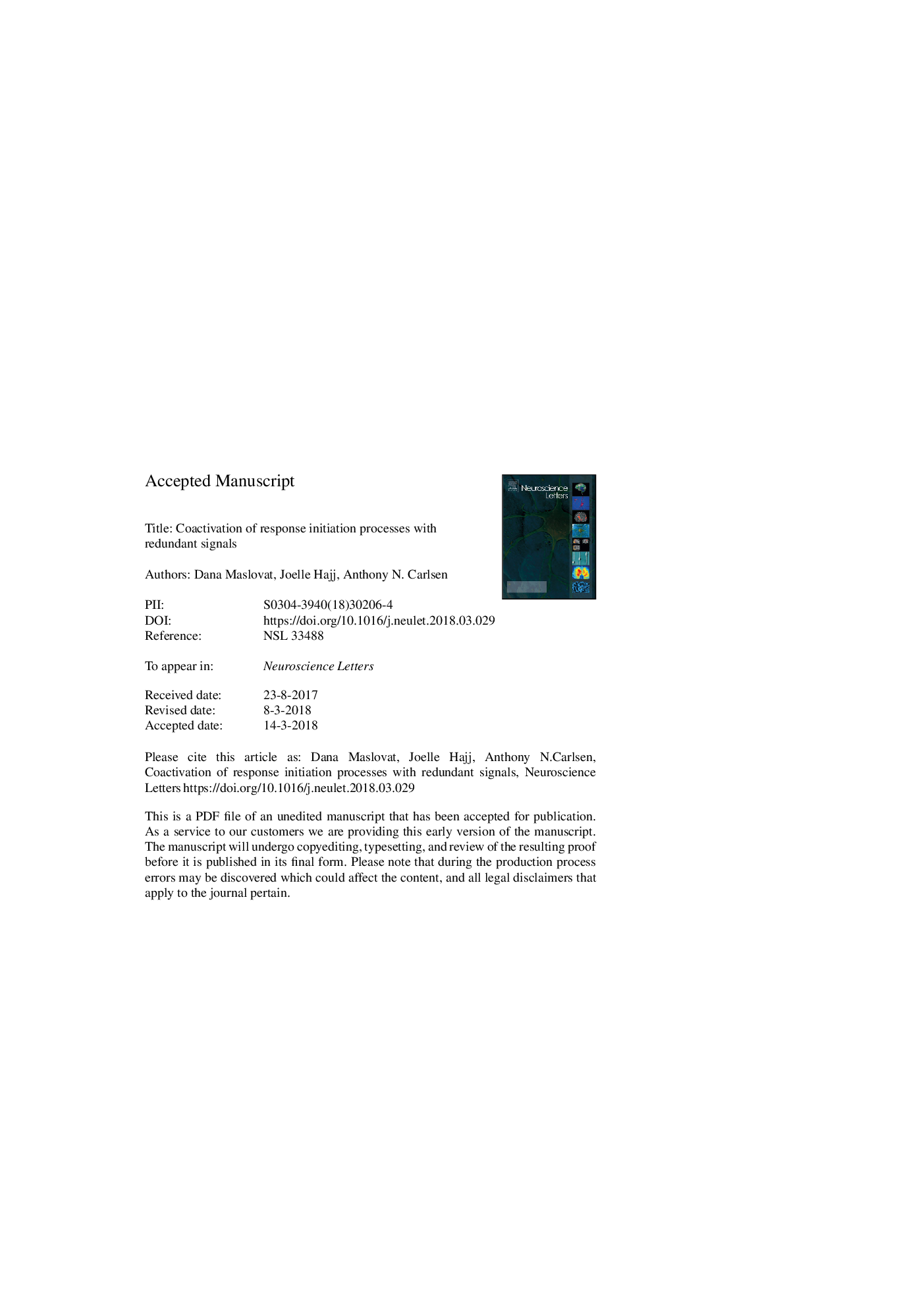| Article ID | Journal | Published Year | Pages | File Type |
|---|---|---|---|---|
| 8841522 | Neuroscience Letters | 2018 | 20 Pages |
Abstract
During reaction time (RT) tasks, participants respond faster to multiple stimuli from different modalities as compared to a single stimulus, a phenomenon known as the redundant signal effect (RSE). Explanations for this effect typically include coactivation arising from the multiple stimuli, which results in enhanced processing of one or more response production stages. The current study compared empirical RT data with the predictions of a model in which initiation-related activation arising from each stimulus is additive. Participants performed a simple wrist extension RT task following either a visual go-signal, an auditory go-signal, or both stimuli with the auditory stimulus delayed between 0 and 125â¯ms relative to the visual stimulus. Results showed statistical equivalence between the predictions of an additive initiation model and the observed RT data, providing novel evidence that the RSE can be explained via a coactivation of initiation-related processes. It is speculated that activation summation occurs at the thalamus, leading to the observed facilitation of response initiation.
Keywords
Related Topics
Life Sciences
Neuroscience
Neuroscience (General)
Authors
Dana Maslovat, Joëlle Hajj, Anthony N. Carlsen,
